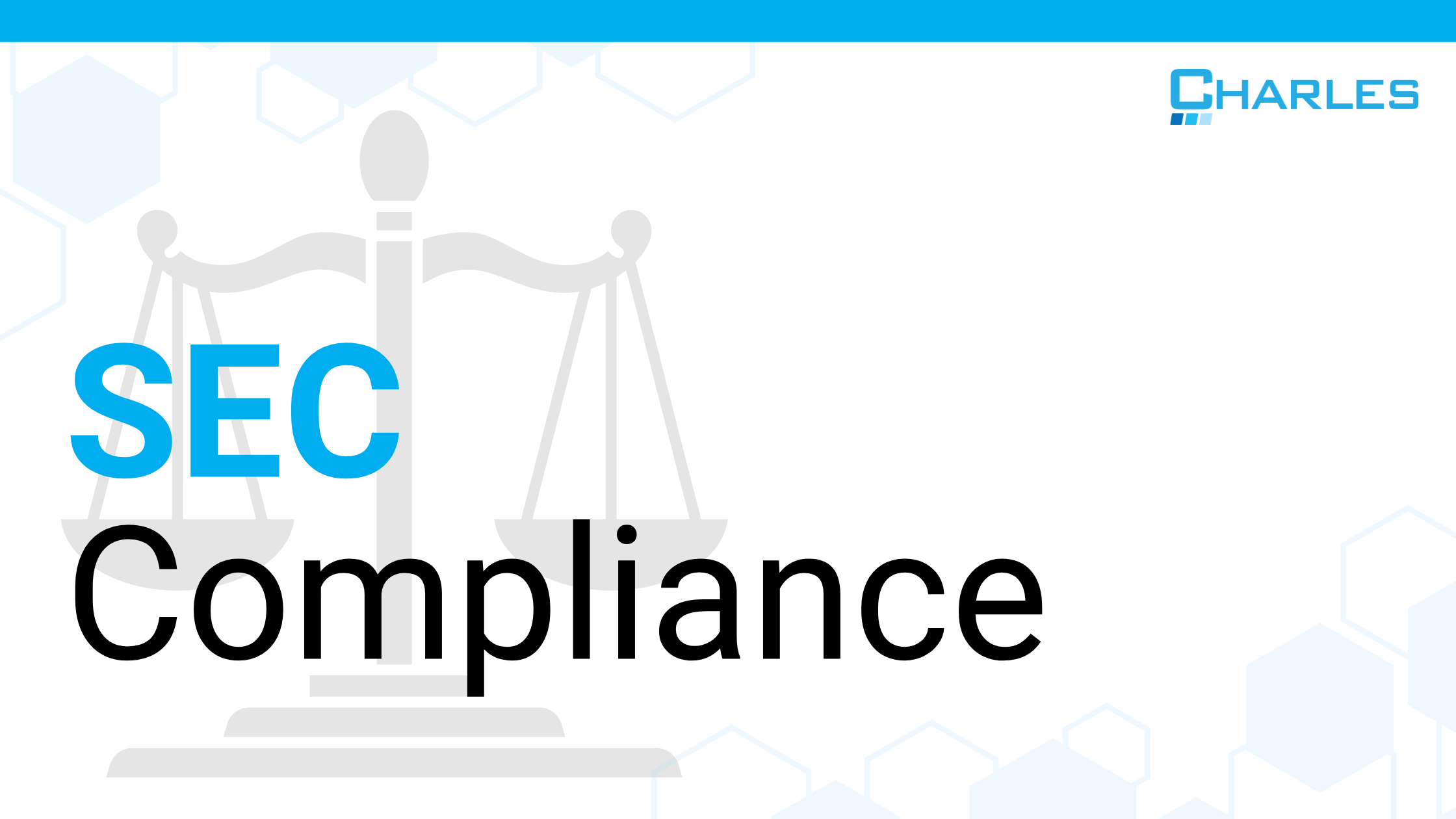
For financial firms navigating the ever-evolving landscape of cybersecurity, understanding the Securities and Exchange Commission (SEC) compliance requirements is crucial. This guide delves into the key cybersecurity points mandated by the SEC and explores how Managed Service Providers (MSPs) can empower you to demystify and achieve compliance effectively.
Understanding SEC Cybersecurity Requirements
The SEC emphasizes robust cybersecurity measures to protect sensitive customer data and ensure market integrity. While specific regulations may vary depending on the firm's size and activity, some core focus areas include:
Access Controls
Access controls play a crucial role as fundamental pillars in the cybersecurity defense of financial institutions. They serve as the guardians, ensuring that only authorized individuals and systems can access sensitive information and critical systems. This is of utmost importance for financial firms, given the highly valuable and sensitive data they manage, such as:
- Customer financial information: Account details, transaction history, personal data.
- Market data: Trading data, investment information, non-public company information.
- Internal financial data: Financial reports, strategic plans, intellectual property.
Strong access controls minimize the risk of unauthorized access by:
- Limiting access: Granting access only to individuals with a legitimate need and at the least privilege level necessary to perform their job duties.
- Preventing unauthorized modifications: Controlling who can modify or edit sensitive data, preventing accidental or malicious changes.
- Detecting suspicious activity: Monitoring access attempts and user activity to spot anomalies and potential breaches.
Here's why access controls are particularly important for financial institutions:
- Compliance with regulations: The SEC and other regulatory bodies mandate strong access controls for financial institutions to protect sensitive customer data and ensure market integrity.
- Data breaches and financial losses: Unauthorized access can lead to data breaches, exposing sensitive information and resulting in financial losses, reputational damage, and regulatory fines.
- Insider threats: Even authorized users can pose a threat if they have excessive access or misuse their privileges. Access controls help mitigate this risk.
Types of access controls used in financial institutions:
- Multi-factor authentication (MFA): Requires multiple verification factors, like a password and a fingerprint scan, to access sensitive information.
- Role-based access control (RBAC): Assigns access permissions based on an individual's job role and responsibilities.
- Least privilege principle: Grants users the minimum level of access needed to perform their tasks.
- User activity monitoring (UAM): Continuously monitors user activity for suspicious behavior, such as unusual access attempts or attempts to access unauthorized data.
Data Security
Data security acts as a robust defense system, safeguarding the valuable assets of financial firms from unauthorized access, alteration, or harm. Here's why data security holds immense significance for financial institutions:
Protecting Valued Assets: Financial institutions manage a vast array of sensitive data, including:
- Customer information: Social security numbers, account numbers, financial statements, and transaction history.
- Market data: Trading data, investment information, and non-public company information.
- Internal data: Financial reports, strategic plans, and intellectual property.
A data breach exposing this information can have devastating consequences:
- Financial losses: Customers may experience identity theft or fraudulent transactions, leading to financial losses for both the customer and the institution.
- Reputational damage: A data breach can shatter trust and damage the reputation of a financial firm, making it difficult to attract and retain clients.
- Regulatory fines: Financial institutions face strict regulations regarding data security, and non-compliance can result in hefty fines.
Strategies for Robust Data Security:
Financial institutions implement a range of data security strategies to strengthen their defenses.
- Encryption: Transforming data into an unreadable format using encryption algorithms to protect it at rest (stored) and in transit (being transferred).
- Data Loss Prevention (DLP): Implementing technologies to prevent sensitive data from being accidentally or intentionally shared outside the organization.
- Regular Backups: Creating regular backups of data and storing them securely allows for recovery in case of a cyberattack or system failure.
- Data Classification: Identifying and classifying data based on its sensitivity to prioritize security measures for the most critical information.
Incident Response
Incident response (IR) is a crucial emergency response plan for financial firms in the face of a cyberattack. It is comparable to having a well-practiced emergency protocol in place to efficiently handle a cybersecurity incident, mitigating harm and ensuring a prompt recovery.
Here's why a robust incident response strategy is crucial for financial institutions:
- Time is of the essence: In a cyberattack, every second counts. A well-defined IR plan helps minimize the impact by quickly identifying, containing, and eradicating the threat before it spreads further.
- Mitigating Damage: A swift response can limit the damage caused by a cyberattack, such as data loss, financial losses, and operational disruptions.
- Protecting Reputation: A quick and effective response can help maintain the trust and confidence of customers and investors, minimizing reputational damage.
- Compliance Requirements: Many regulatory bodies, like the SEC, require financial institutions to have a documented and tested IR plan.
Key phases of a comprehensive IR plan:
- Preparation: This involves establishing an incident response team (IRT) with clear roles and responsibilities, developing a communication plan, and conducting regular training and testing.
- Detection and Analysis: This involves employing various tools and techniques to identify and analyze suspicious activity within the network.
- Containment and Eradication: This involves taking steps to isolate the attack, stop the spread of the threat, and remove the attacker from the system.
- Recovery and Post-incident Review: This involves restoring affected systems and data, conducting a thorough investigation to understand the root cause of the incident, and implementing improvements to prevent similar attacks in the future.
Benefits of a strong IR plan for financial firms:
- Reduced impact of cyberattacks: By responding quickly and effectively, financial institutions can minimize the damage caused by a cyberattack.
- Improved customer and investor confidence: A demonstrated ability to handle cyberattacks effectively can instill confidence in customers and investors.
- Enhanced regulatory compliance: A well-defined and tested IR plan helps financial institutions comply with regulatory requirements.
- Faster recovery: Having a clear plan in place allows for a faster and more efficient recovery process after an incident.
System Integrity
System integrity, within the realm of cybersecurity for financial institutions, pertains to the reliability and credibility of their essential systems and data. Essentially, it denotes that these systems stay unaltered, intact, and precise amidst potential threats. Here's why it carries substantial significance for financial institutions:
Financial institutions rely heavily on critical systems to function, including:
- Trading and transaction processing systems: Ensure smooth daily operations and financial transactions.
- Customer data management systems: Store and manage sensitive customer information.
- Financial reporting systems: Generate accurate financial reports for investors and regulators.
Compromised system integrity can lead to severe consequences:
- Financial losses: Inaccurate financial data can lead to incorrect transactions and significant financial losses, both for the institution and its customers.
- Operational disruptions: Malfunctioning systems can disrupt daily operations, hindering financial services and causing economic instability.
- Loss of trust: Tampered data or unreliable systems can erode customer and investor confidence, leading to reputational damage.
Strategies for Maintaining System Integrity:
Financial institutions employ various strategies to maintain the trust and integrity of their systems:
- Regular patching: Applying security patches promptly to address vulnerabilities in software and operating systems.
- Vulnerability assessments and penetration testing: Identifying and addressing potential weaknesses in systems before they can be exploited by attackers.
- Access controls: Limiting access to critical systems only to authorized individuals with the least privilege necessary.
- Data backups and redundancy: Creating regular backups of data and implementing redundancy measures to ensure data availability and system recoverability in case of an attack.
- Change management processes: Implementing strict procedures for making changes to critical systems to minimize the risk of introducing vulnerabilities.
Business Continuity & Disaster Recovery
Business continuity and disaster recovery (BC/DR) are vital elements of a strong cybersecurity strategy for financial institutions. They serve as a safety net against unexpected events, guaranteeing uninterrupted operations and minimizing disruptions in the event of cyberattacks, natural disasters, or other disruptive incidents.
Why BC/DR matters for financial firms:
- Minimizing downtime: Financial institutions operate in a fast-paced environment where even brief periods of downtime can lead to significant losses - both financial and reputational. A BC/DR plan helps ensure continued access to critical systems and data, minimizing downtime and allowing operations to resume quickly.
- Protecting customer trust: Customers rely on financial institutions for access to their funds and financial information. A well-defined BC/DR plan demonstrates the institution's commitment to protecting this trust by ensuring the availability and security of customer data even during disruptions.
- Maintaining regulatory compliance: Many regulations require financial institutions to have a documented and tested BC/DR plan. Failure to comply can result in fines and penalties.
Elements of a comprehensive BC/DR plan:
- Business impact analysis (BIA): Identifying critical business functions and their tolerance for downtime.
- Risk assessment: Evaluating potential threats and vulnerabilities that could disrupt operations.
- Development of recovery strategies: Creating detailed plans for restoring critical systems and data in case of an incident.
- Testing and exercising: Regularly testing and updating the BC/DR plan to ensure its effectiveness.
Benefits of a strong BC/DR plan for financial institutions:
- Reduced financial losses from downtime.
- Enhanced customer confidence and trust.
- Improved regulatory compliance.
- Faster recovery from disruptive events.
Investing in BC/DR capabilities allows financial institutions to:
- Demonstrate resilience in the face of adversity.
- Protect their financial well-being and reputation.
- Maintain their critical role in the financial ecosystem.
Compliance Challenges and How MSPs Can Help
Meeting and upholding SEC compliance can pose challenges for financial institutions due to its complexity and resource demands. Managed Service Providers (MSPs) step in to provide a range of tools and expert guidance, simplifying the compliance journey.
- Security Expertise: MSPs possess a deep understanding of SEC regulations and cybersecurity best practices. They can guide you in implementing and maintaining the necessary controls to meet compliance requirements.
- Technology Solutions: MSPs offer a wide range of managed security services, including cloud security, endpoint protection, SIEM/SOAR solutions, and vulnerability management tools, to bolster your defenses and simplify compliance efforts.
- 24/7 Monitoring and Response: MSPs provide continuous monitoring of your systems for suspicious activity and offer rapid response capabilities to mitigate threats and minimize damage in case of an incident.
- Compliance Guidance: They can assist in navigating the complexities of SEC regulations, keeping you updated on the latest requirements, and providing guidance on adapting your security posture accordingly.
By teaming up with a seasoned MSP, financial institutions can access the expertise, technology, and resources needed to navigate the intricacies of SEC compliance, fortify cybersecurity defenses, and reduce the potential for costly data breaches and regulatory repercussions. This partnership allows for a focus on core business activities while safeguarding the safety and security of clients' sensitive information. If you're looking for help when it comes to cybersecurity or compliance for your financial firm, reach out to Charles IT today to see how we can help you!

.png)



